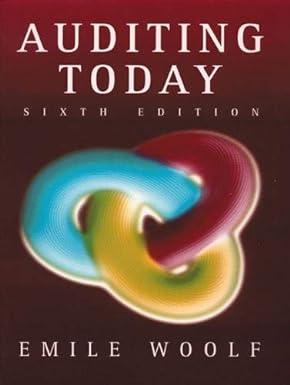Question
The following information is available for Solley Corporation: Debt: 5,000 bonds outstanding that are selling for 96 percent of par. Bonds with similar characteristics are
The following information is available for Solley Corporation: Debt: 5,000 bonds outstanding that are selling for 96 percent of par. Bonds with similar characteristics are yielding 8.5 percent, pretax. The bond par value is 1,000. Common stock: 43,800 shares outstanding, selling for 51 per share; the beta is 1.54. Preferred stock: 10,000 shares of 7 percent preferred stock outstanding with a stated value of 100 per share, currently selling for 83 per share. Market: 7.5 percent market risk premium and 3.6 percent risk-free rate. Assume the companys tax rate is 21 percent. Instructions: 1. Calculate the firms market value capital structure. (6 points) 2. Calculate the firms costs of common equity, preferred stock and debt. (6 points) 3. Calculate the weighted average cost of capital (WACC). (5 points) 4. What discount rate should the firm apply to a new project's cash flows if the project has the same risk as the company's typical project? Explain. (4 points) 5. What happens if we use the WACC as the discount rate for all projects? Explain. (3 points) 6. Which is more relevant, the pretax or the after-tax cost of debt? Explain. (3 points) 7. Which are more relevant, the book or market value weights? Explain. (3 points) CASE 2 (25 points) The treasurer of Arnaud Corporation has projected the cash flows of Projects A and B as follows: C0 C1 C2 C3 Project A -285,000 170,000 100,000 160,000 Project B -285,000 110,000 180,000 200,000 The relevant discount rate is 12 percent. The company imposes a payback cut-off of two years for its investment projects. Instructions: 1. If these two projects are independent, which project(s) should Arnaud accept based on: a. The Payback rule? Explain. (5 points) b. The Profitability Index rule? Explain. (5 points) c. The IRR rule? Explain. (5 points) d. The NPV rule? Explain. (5 points) 2. If these two projects are mutually exclusive, which project should Arnaud accept? Explain. (5 points) CASE 3 (25 points) You have been hired as a consultant for Medicals Inc., manufacturer of medical devices. The company projects unit sales for a new dental implant as follows: Year Unit Sales 1 73,000 2 86,000 3 97,000 4 68,000 Additional information: Production of the implants will require 1,500,000 in net working capital immediately, all of which will be recovered at the end of the project. Total fixed costs are 4,200,000 per year, variable production costs are 255 per unit, and the units are priced at 375 each. The equipment needed to begin production has an installed cost of 8,500,000. This equipment qualifies as three-year MACRS property (depreciation rates are 33.33% for Year 1, 44.45% for Year 2, 14.81% for Year 3, and 7.41% for Year 4). In four years, this equipment can be sold for about 20 percent of its acquisition cost. The tax rate is 21 percent and the required return is 24 percent. Instructions: 1. Complete the pro forma below and determine total cash flows for each year of projects life. (20 points) 2. Would you recommend to accept or reject the project? Explain your decision. (5 points) Year 0 1 2 3 4 Sales revenues Variable costs Fixed costs Depreciation EBIT Taxes Net income Operating Cash Flow Capital spending Net Working Capital After-tax salvage value Total Cash Flow CASE 4 (20 points) The owners equity accounts for Vera Corporation are shown here: Common stock (2 par value) 100,000 Capital surplus 860,000 Retained earnings 2,570,800 Total owners equity 3,530,800
Step by Step Solution
There are 3 Steps involved in it
Step: 1

Get Instant Access to Expert-Tailored Solutions
See step-by-step solutions with expert insights and AI powered tools for academic success
Step: 2

Step: 3

Ace Your Homework with AI
Get the answers you need in no time with our AI-driven, step-by-step assistance
Get Started


